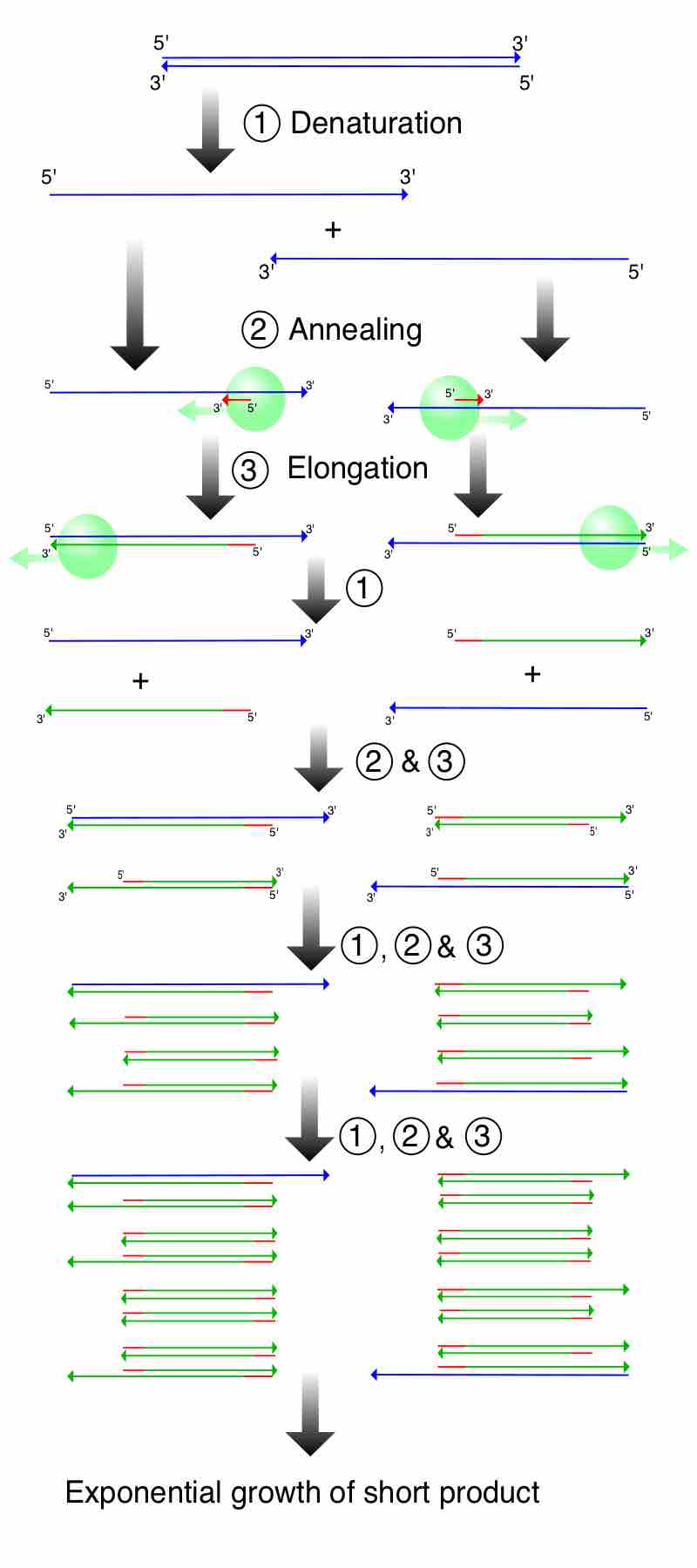Polymerase chain reaction (PCR) is a useful technique for scientists, because it allows for the amplification and mutation of DNA. Through PCR, small quantities of DNA can be replicated by orders of magnitude, not only essentially preserving the sample if successful, but allowing for study on a much larger scale.. Without PCR, the studies we perform would be limited by the amount of DNA we were able to isolate from samples. Through PCR, the original DNA is essentially limitless, allowing scientists to induce various mutations in different genes for further study.

Polymerase chain reaction
a schematic of the polymerase chain reaction
Through site-directed mutagenesis or customized primers, individual mutations in DNA can be made. By changing the amino acids transcribed from DNA through individual mutations, the importance of those amino acids with respect to gene function can be analyzed. However, this process can be difficult, particularly when genes act in concert (with varying expression with respect to gene activity). The length of time it takes to run a successful PCR and perform other techniques before additional studies can be done (protein expression, isolation, and purification, for example), makes biochemical research time-consuming and difficult. However, PCR, coupled with other biochemical techniques, allows us to analyze the very core of organisms and the processes by which they function. Common PCR protocols in labs today include knockout genotyping, fluorescence genotyping and mutant genotyping. Researchers can use PCR as a method of searching for genes by using primers that flank the target sequence of the gene along with all other necessary components for PCR. If the gene is present, the primers will bind and amplify the DNA, giving a band of amplified DNA on the agarose gel that will be run. If the gene is not present, the primers will not anneal and no amplification will occur.
The ability to identify specific genes to specific organisms has increased the use of PCR and has allowed it to be more specific and eliminate the possibility of cross contaminants. The identification of specific genes to specific organisms has important medical diagnostic value.
PCR is a reliable method to detect the presence of unwanted genetic materials, such as infections and bacteria in the clinical setting. It can even allow identification of an infectious agent without culturing. For example, in diagnosis of diseases like AIDS, PCR can be used to detect the small percentage of cells that are infected with HIV by utilizing primers that are specific for genes specialized to the HIV virus. PCR can reveal the presence of HIV in people who have not mounted an immune response to this pathogen, which may otherwise be missed with an antibody assay). Additionally, PCR is used for identifying bacterial species, such as Mycobacterium tuberculosis in tissue specimens. With the use of PCR, as few as 10 bacilli per million human cells can be readily detected. The bacilli are identified by using Mycobacterium tuberculosis specific genes.